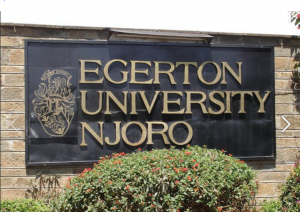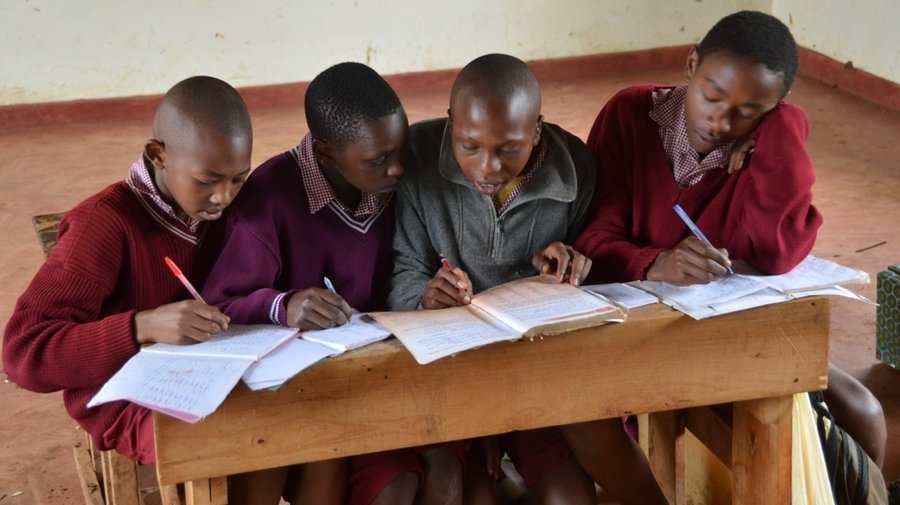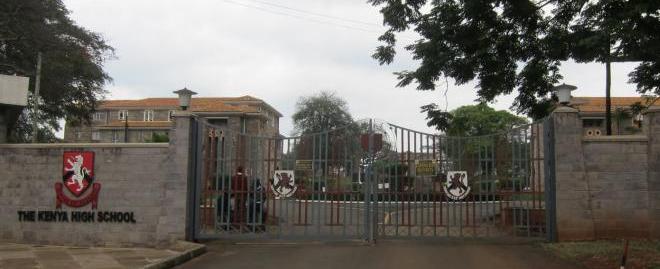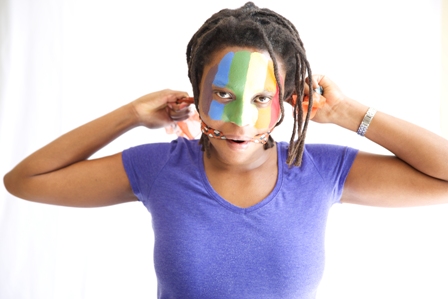By Sheila N Waswa
Published September 30, 2016
 Kenya has for the 16th year running admitted female students to its 29 public universities on the basis of affirmative action.
Kenya has for the 16th year running admitted female students to its 29 public universities on the basis of affirmative action.
Though ‘affirmative action’, the practice of favouring members of a perceived disadvantaged group is supposed to correct some historical ‘injustice’, it is proving to be counterproductive in Kenya where it is creating new socio-cultural and economic problems.
The cut-off points for girls admitted to pursue degree courses in public universities has since 2001 been at least two points lower than those for boys on the argument that it serves to increase the number of girls accessing higher education.
RELATED:How Affirmative Action in Kenya’s Public Universities Might Buttress Stereotypes and Stigma
But is the practice based on sound research?
A report by the University of Sussex in the United Kingdom shows that for every 55 girls enrolled in primary school at Kenya’s independence in 1963, there were 100 boys.By 1990, there were 95 girls for every 100 boys; the previously glaring gender gap in primary school had narrowed to a ratio of almost 1:1.
When it comes to secondary school, UNESCO Institute for Statistics 2007 showed that the number of boys stood at 43% and that of girls at 42% in 2006. Once again, the gender ratio was almost 1:1.

But what is even more startling is that 49 years after Kenya’s independence from Britain, 51% of the student population of public universities was female. The number of girls, who had previously been considered marginalised, overtook that of boys in 2015.
Given the statistics above, affirmative action appears to be favouring a group that is now advantaged.
RELATED:Why Kenya’s Education System Calls for Re-orientation
How so?
Apart from discriminating against boys and entrenching a stereotype that women’s intellect is inferior to that of men, affirmative action is also disrupting social structures such as family setup and gender relations in the wider society. It is unclear how socio-economically empowered women are expected to relate with traditional, less educated and economically disadvantaged counterparts in a country that is almost obsessed with affirmative action for the former.
 Learners in Kenya go through the same education system, same curriculum developed by the Kenya Institute of Curriculum Development and sit examinations set by Kenya National Examinations Council. Why, then, should one gender be favoured over another in the access to state university education, as the girls are over boys? It is almost nonsensical for a girl who scores 56 points out of the maximum 84 in a privileged girls’ school such as The Kenya High School in Nairobi, Alliance Girls High School in Kikuyu or Moi Girls’ High School in Eldoret to receive university admission while a boy from under-privileged district day institutions like Kangemi High School in Nairobi, Kiserian Secondary School in Kajiado, Genge High School in Migori or Milo Boys in Bungoma who scores 59 points in Kenya Certificate of Secondary Education examination is locked out just because he is a boy. Unlike the latter, the former’s schools are equipped with adequate classrooms, libraries, laboratories, workshops and dormitories complete with safe drinking water and electricity. They also have access, around the clock, to qualified, well paid teachers employed for them by the Teachers Service Commission in their boarding schools.
Learners in Kenya go through the same education system, same curriculum developed by the Kenya Institute of Curriculum Development and sit examinations set by Kenya National Examinations Council. Why, then, should one gender be favoured over another in the access to state university education, as the girls are over boys? It is almost nonsensical for a girl who scores 56 points out of the maximum 84 in a privileged girls’ school such as The Kenya High School in Nairobi, Alliance Girls High School in Kikuyu or Moi Girls’ High School in Eldoret to receive university admission while a boy from under-privileged district day institutions like Kangemi High School in Nairobi, Kiserian Secondary School in Kajiado, Genge High School in Migori or Milo Boys in Bungoma who scores 59 points in Kenya Certificate of Secondary Education examination is locked out just because he is a boy. Unlike the latter, the former’s schools are equipped with adequate classrooms, libraries, laboratories, workshops and dormitories complete with safe drinking water and electricity. They also have access, around the clock, to qualified, well paid teachers employed for them by the Teachers Service Commission in their boarding schools.
Should ‘positive discrimination’ or affirmative action for girls be deemed necessary, then those who select students to join universities would be advised to use it selectively, based on the type of school one attended and not necessarily one’s gender for one to benefit from affirmative action.
Rather than empower women, affirmative action gives the impression that the intellectual abilities of females are no match for those of their male counterparts. That, left on their own, females cannot achieve much in life. This perception undermines the esteem and confidence of female students as they—including those who excelled in their final secondary school examinations—are seen as only having been helped to get to public university. This undermines the efforts of women to work hard even in other areas of life.

That affirmative action for women has resulted in discrimination against boys is not in doubt. According to a survey conducted in 2015 by Nation’s Newsplex, more girls than boys are being enrolled in school despite the fact that more boys than girls are being born and surviving to the school-going age.
RELATED:Why Nyeri County Women Have Taken to Chopping off Their Men’s Genitals
The number of boys and girls in standard one may be at par. As they progress to secondary school, more boys than girls drop out of school in order to fend for their families.
 Belio Kipsang, Kenya’s Principal Secretary in the Ministry of Education, Science and Technology blames this plight of boys on ‘over promotion of girls’ and child labour.
Belio Kipsang, Kenya’s Principal Secretary in the Ministry of Education, Science and Technology blames this plight of boys on ‘over promotion of girls’ and child labour.
Saying “Society is paying the price for the over-protection of girls,” Kipsang says boys “drop out of school early to support their families.'”
“Effects of Affirmative Action in Education on Enrolment and Retention in Boys’ High Schools”, a survey conducted in Mbita District in western Kenya in 2015, supports Belio Kipsang’s observation.
RELATED:Manifesto to Promote Women in Science Launched
That men comprise a large segment of unskilled labourers—workers on farms, building and construction sites, motor-cycle taxi operators known as boda boda and other manual jobs—would appear to give weight to the observation that boys are getting marginalized as far as education is concerned. Such men are likely to be among those who dropped out of school in order to support their needy families as girls remained in school.

How does this come about?
Many families across Kenya believe men are stronger and, true to the traditional role of men as providers and protectors, they are pulled out of school to participate in activities such as sugar-cane cutters, matatu public transport touts, luggage carriers, handcart-pullers and boda boda operators, among other menial activities to support families. This then, could explain why female students comprise 51% of undergraduate level classes in public universities.
RELATED:Factors Shaping Africa’s Entertainment & Media Industry
 Keeping all things constant, the number of female students in universities is directly proportional to the number of women getting employment after graduation. With affirmative action in place, the Public Service Commission ensures that at least one-third of any public service positions have women representation. This creates an imbalance in society: more highly educated and financially stable women against less educated, financially unstable and therefore dis-empowered men. Such men, who can no longer play their traditional roles are more likely to resort to substance abuse to cope with their perceived ‘worthlessness’.
Keeping all things constant, the number of female students in universities is directly proportional to the number of women getting employment after graduation. With affirmative action in place, the Public Service Commission ensures that at least one-third of any public service positions have women representation. This creates an imbalance in society: more highly educated and financially stable women against less educated, financially unstable and therefore dis-empowered men. Such men, who can no longer play their traditional roles are more likely to resort to substance abuse to cope with their perceived ‘worthlessness’.
RELATED:Why Free Primary Education in Kenya Remains a Mirage10 Years Later
 Affirmative action was introduced in December 2000 by the then Universities’ Joint Admissions Board (JAB). Prof Ratemo Michieka, the then chairman of JAB, said public universities had decided to lower the entry requirement for girls in their efforts to help more girls access higher education as they faced many challenges in school life.Does the situation still hold true today or is it high time the practice was looked at afresh?
Affirmative action was introduced in December 2000 by the then Universities’ Joint Admissions Board (JAB). Prof Ratemo Michieka, the then chairman of JAB, said public universities had decided to lower the entry requirement for girls in their efforts to help more girls access higher education as they faced many challenges in school life.Does the situation still hold true today or is it high time the practice was looked at afresh?





